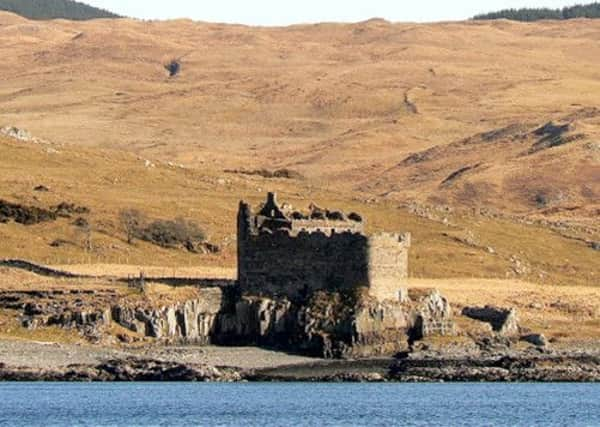Ancient ammunition found at Mingary Castle


• A musket ball and canonball have been unearthed by archaeologists working at Mingary Castle in west Ardnamurchan, Lochaber
• The objects, which were found in the moat, may be remnants of an attack on the castle walls
Advertisement
Hide AdThe artifacts are the latest discoveries by the team tasked with excavating Mingary Castle in west Ardnamurchan, Lochaber, for the first time.
The castle is thought to be the best preserved 13th-century castle in Scotland.
The musket ball is just under an inch in diameter and has been described as being “extremely heavy” due to having a high lead
content.
It is also slightly flattened on one side which historians believe indicates it came into contact with a solid surface such as the castle wall.
The musket ball and cannonball were both found in the moat.
The cannon ball was found in four pieces.
Jon Haylett, a historian who is documenting the progress of the excavation said: “The cannonball was found at the eastern end of the moat.
“It is probably in pieces because it hit the castle wall and fractured before falling into the moat where time and weathering have broken it into four pieces.
Advertisement
Hide Ad“The second find is a musket ball. It is in immaculate condition, and very heavy, probably because it has a high lead content.
“It too came out of the moat, close to where the cannonball was found.”
Advertisement
Hide AdPrevious finds from the excavation include the charred remains of the sandstone castle archway, which it is believed were destroyed in an attack by Alasdair MacColla Mac-Donald in 1645.
The castle was occupied by the Campbells at that time and it is thought Mac-Donald was acting on behalf of the Duke of Montrose.
Other finds include pottery, a barbed iron arrowhead, coins, bones and another cannonball.
The well-preserved castle near the most westerly point of the British mainland was a stronghold for several clan chiefs and the Lords of the Isles, who ruled the Scottish islands.
The site is believed to have close links to Somerled, a 12th-century leader of mixed Norse and Gaelic descent.
The site is being excavated to pave the way for a renovation project which will see it transformed into modern residential accommodation.
• Gallery pictures courtesy of Ricky Clark
SEE ALSO